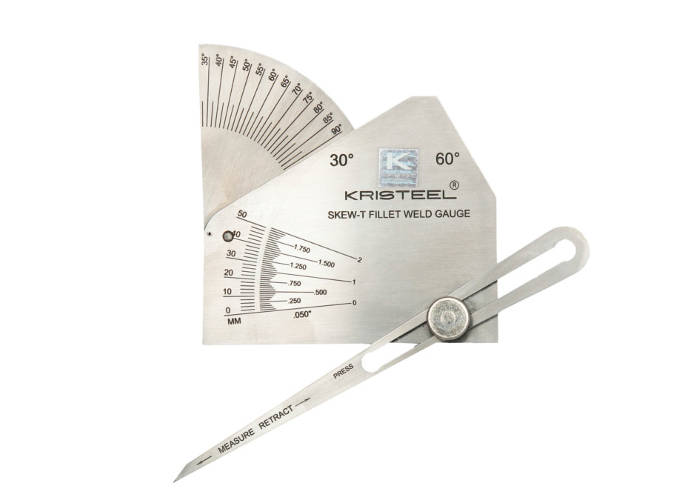The Ultimate Overview to Fillet Weld Quality Assurance: Making Sure Strength and Durability in Your Welded Joints
In the world of welding, ensuring the strength and sturdiness of fillet welds is extremely important for the integrity of welded joints. As we embark on this exploration of fillet weld high quality control, we will certainly reveal essential elements that influence weld stamina, dig into efficient assessment approaches, and review strategies for avoiding common weld problems.
Significance of Fillet Weld Quality Assurance
Making sure appropriate fillet weld quality assurance is vital in assuring the architectural stability and durability of welded components in numerous sectors. Fillet welds are generally made use of in structural steelwork, bridges, pressure vessels, pipes, and various other essential framework where the toughness of the weld is vital to general security and performance. Quality assurance measures such as aesthetic examinations, non-destructive screening, and adherence to welding procedures help identify possible flaws like lack of fusion, insufficient infiltration, undercutting, or too much support.
Key Factors Impacting Weld Strength
Attaining ideal weld toughness needs mindful consideration of various crucial factors that affect the integrity and longevity of the welded joint. The initial important factor appertains joint prep work, which includes cleansing the base metals to get rid of any pollutants that can compromise the weld. In addition, the fit-up of the joint is important to make certain proper infiltration and blend of the filler material.
The choice of the appropriate welding method and criteria also plays a considerable duty in determining weld stamina. Variables such as heat input, travel speed, and electrode angle can impact the high quality of the weld. Moreover, keeping the proper interpass temperature throughout multi-pass welding is vital to stop cracking and make certain a solid bond between the layers.
Moreover, the option of filler material and its compatibility with the base steels is vital for attaining high weld toughness. Utilizing filler material with the suitable mechanical residential or commercial properties can enhance the general honesty of the weld. Post-weld warm therapy and appropriate evaluation techniques are important steps in ensuring the toughness and durability of the bonded joint.
Assessment Techniques for Weld Integrity

Another important examination approach is fluid penetrant testing, where a liquid dye is put on the weld surface - Gauge Fillet Weld. The dye seeps into any type of surface-breaking flaws, making them noticeable under UV light. This technique is reliable for detecting flaws that may not show up to the naked eye


Ultrasonic testing is likewise widely utilized for inspecting weld honesty. High-frequency acoustic wave are routed into the weld, and any type of disruptions in the audio wave pattern indicate prospective issues like fractures or absence of fusion.
These assessment methods play a crucial duty in guaranteeing the top quality and reliability of welds, eventually adding to the overall stamina and durability of welded joints in commercial setups.
Avoiding Typical Weld Issues
In order to maintain the structural honesty of bonded joints in industrial applications, it is important to apply safety nets to resolve common weld problems. One typical flaw is absence of fusion, where the filler material stops working to bond adequately with the base steels, bring about vulnerable points in the weld. This can be avoided by making sure correct warmth control and making use of the correct welding technique.
One more regular problem is porosity, triggered by gas entrapment in the weld steel throughout the welding procedure. To stop this, it is important to cleanse the go to my site base steels extensively, make use of completely dry electrodes, and keep an ideal welding setting with correct air flow.
In addition, fractures in welds can jeopardize the joint's stamina. To prevent this problem, it is essential to manage the air conditioning rate after welding, utilize pre-heating when needed, and select suitable welding parameters.
Enhancing Bonded Sturdiness With Proper Methods
One important approach to improve weld resilience is to make certain proper weld grain placement. By placing the weld bead precisely within the joint, the weld's strength and resistance to tiredness can be significantly enhanced.
Furthermore, utilizing appropriate pop over here pre-weld and post-weld warm therapies can aid minimize residual anxieties and improve the weld's durability, making it extra resistant to splitting and failure in time. An additional technique to improve weld longevity is to use high-grade welding consumables and base materials. Selecting the ideal filler steel and guaranteeing the tidiness of the base steels can prevent additions and various other issues that could compromise the weld's sturdiness. By applying these proper techniques, welders can guarantee that their bonded joints show exceptional strength and sturdiness, fulfilling the finest standards.
Verdict
Finally, keeping top quality control requirements for fillet welds is important for guaranteeing the strength and resilience of welded joints. By recognizing the crucial aspects Click This Link impacting weld strength, making use of assessment techniques for weld integrity, preventing usual weld problems, and employing correct methods, welders can enhance the total toughness of their welds. It is necessary to prioritize quality assurance steps to create reputable and long-lasting welded joints.
In the world of welding, guaranteeing the toughness and sturdiness of fillet welds is paramount for the honesty of welded joints. As we get started on this exploration of fillet weld top quality control, we will reveal vital variables that influence weld toughness, delve right into effective assessment methods, and discuss methods for preventing typical weld issues.Accomplishing optimum weld strength needs mindful consideration of different vital elements that influence the honesty and sturdiness of the bonded joint (Gauge Fillet Weld).In conclusion, preserving high top quality control standards for fillet welds is important for making certain the strength and toughness of bonded joints. By understanding the essential aspects influencing weld strength, utilizing assessment approaches for weld honesty, preventing typical weld flaws, and using correct strategies, welders can enhance the overall sturdiness of their welds